Best PC cases in 2024 for airflow, cooling, cable management, and more
Only the best chassis will do.
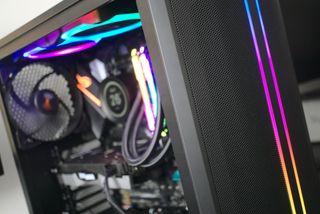
• The list in brief ↴
1. Best overall
2. Best Mini-ITX
3. Best for airflow
4. Best value
5. Best for water cooling
6. Best design
• How to choose
Building a great PC starts with the case. It's what determines how you'll build your new rig, which parts you can use, and how easy it'll be. We've gone through some of the best PC cases and picked out a select few that we feel really shine above the rest in various categories. Whether you need a case for maximum airflow or water-cooling capabilities, we've got you covered.
There are so many PC cases out there, so you will find plenty that takes to your liking. It's impossible for us to expand this guide to cover more PC cases and keep it updated with all the latest models. We feel this collection of PC cases reflects the very best available on the market.
We're regularly reviewing PC cases from various vendors. Should we come across new cases that deserve a spot in our best PC case collection, we'll consider replacing an existing listing or creating a new category altogether. PC cases come in all shapes and sizes, but the best part is (so long as you make sure everything fits) there's no wrong choice since it's all down to what you prefer your PC to look like.
The quick list
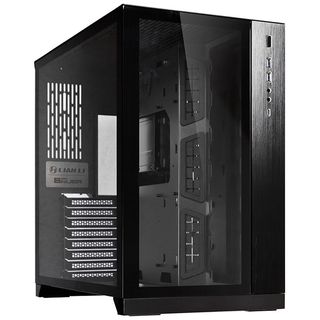
Best overall
Compact PC cases like the Lian Li O11D Mini usually cut corners in places, but it seems Lian Li managed to create such a platform without doing so. This small case can even handle full-sized ATX motherboards, water-cooling, and 3.5-inch drives.
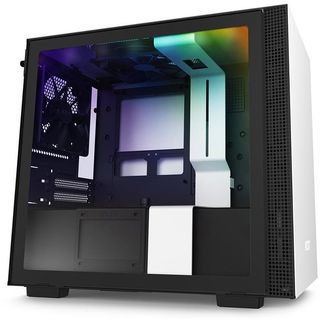
Best Mini-ITX
The new H210i is better than ever, allowing you to put together a compact mini-ITX PC build in a small form factor case with smart features and a solid design.
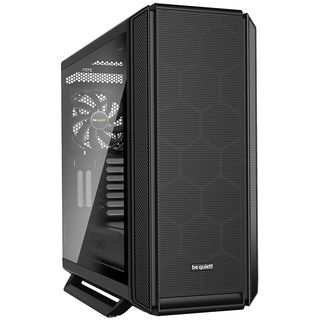
Best airflow
be quiet! almost nailed it with the Silent Base 802. If the company can address the awkward feet, update the cable management on the rear of the motherboard tray, and make it just a bit more compact, it would be among the best in its class.
Load the next 3 cases..
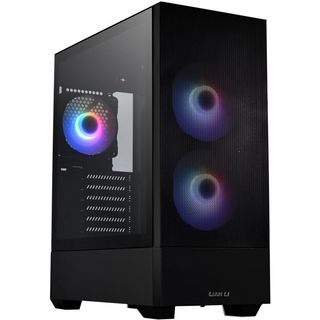
Best value
A stunning, high-quality, easy-to-build in PC case that should definitely be on your shortlist in the mid-range. It's easily one of the simplest and most enjoyable cases I've ever built a PC in, and while it's a little more expensive than some of its competitors, the Lancool 205 Mesh is great value for it and well worth housing your next build.
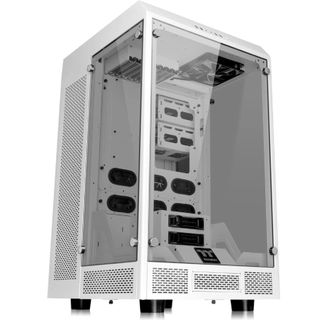
Best for liquid cooling
This truly is one of the best PC cases around and easily a top pick for builds with custom water-cooling loops. So long as you can fit it into your budget, I would recommend checking out the Thermaltake Tower 900 in person to witness its greatness.
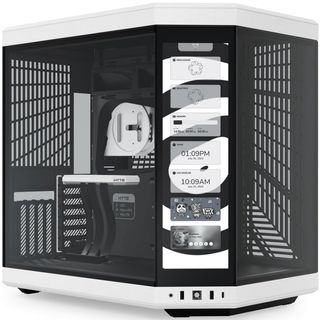
Best design
The Y70 Touch is a stunning upgrade to the already impressive HYTE Y-Series cases, featuring a mesmerizing 14.1-inch 4K multi-touchscreen and support for spacious custom builds in a dual-chamber design.
Best overall PC case
Why you can trust Windows Central
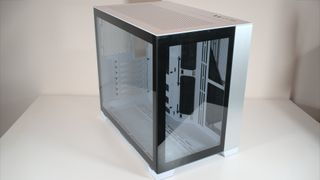
Lian Li PC-O11 Dynamic
Specifications
Reasons to buy
Reasons to avoid
There are some stunning PC cases out there, but if you want something exceptional, you'll want to check out the Lian Li PC-O11 Dynamic. Not only does this case look good, but it's also straightforward to build a PC inside of, supports water cooling with plenty of radiator mounting options, and can even take two PSUs.
On paper, the Lian Li O11 Dynamic looks like your everyday PC case, but it's not. This sleek and well-designed chassis is a gorgeous piece of engineering. It's not all about looks either. Since Lian Li brought DER8AUER on board, you know it's going to perform well. With enough space for up to three 360mm radiators, there's plenty of room for a custom water-cooling loop.
You can throw up to nine 120mm fans inside the O11 Dynamic from Lian Li, allowing ample air to be pushed through the four filters. There are also a few variants of this chassis, with our own review taking shape inside the Mini, a more compact version that's still able to take a full-sized ATX motherboard (though you do lose out to an SFX PSU.)
As well as rocking a striking design made up of steel, tempered glass, and aluminum, the HDD cage can be removed for a second PSU to be installed. Lian Li made sure to include plenty of cable management features, and you can easily create a clean PC with powerful hardware. Overall, the PC-O11 Dynamic is simply sublime, especially if you choose the Mini.
Best Mini-ITX tower
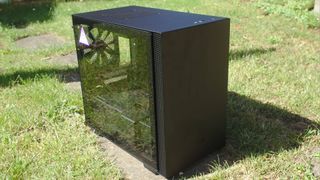
NZXT H210i
Specifications
Reasons to buy
Reasons to avoid
NZXT makes some compelling PC cases, and the company has tried shaking the industry up with concepts like the NZXT H1, but for our Mini-ITX tower pick, it has to be the H210i. This small form factor chassis has plenty going for it, rivaling features found in larger cases. It's our favorite Mini-ITX case because of its exquisite design, expansion, and cable management. It's available in black, black and red, and black and white.
Because it only fits Mini-ITX motherboards, you'll only be able to use two PCI slots, but this should fit most GPUs considering the clearance available hits up to 325mm before you're going through the front panel. It may be a compact package, but NZXT managed to work in up to two front 140mm fans, a single 120mm on top, and another in the rear.
You could even get away with up to a 240mm radiator in front, 280mm up top, and 120mm in the rear. There are plenty of configuration options here, allowing you to utilize more than one AIO loop (one for the CPU and another for the GPU). There are also two dust filters, one in the front and another for the PSU intake.
The H210i is quiet, allows your components to run cool, and looks great. Throw in some RGB lighting you can control from within Windows 10 using NZXT CAM software, and you've got a winner. This is a sound option for anyone wanting to put together a Mini-ITX build that won't be housed inside a cube.
Best for maximizing airflow
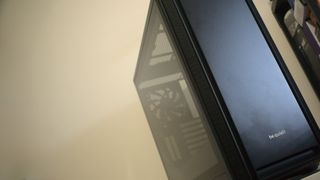
Specifications
Reasons to buy
Reasons to avoid
The be quiet! Silent Base 802 is the case to buy if you value noise dampening over all else. It's a subtle case that doesn't scream gaming and the focus on airflow and cooling makes it one of the best around if you want the lowest system temperatures. You can buy this case in black, black with a window, white, and white with a window.
This behemoth of a case supports motherboards up to E-ATX, has nine PCI slots on the rear for all your GPUs and expansion cards, and comes rocking plenty of 2.5 and 3.5-inch drive bays for an insane amount of storage space. The best part is the mesh front panel, which allows for a substantial amount of cool air to be sucked into the chassis.
be quiet! also made sure to include two dust filters to keep the insides clean, with one being on top and another on the front. I get the call that top-mounted dust filters are a little silly due to the top vents usually being used for exhaust, but this does help trap dust as it falls onto the case when not in use.
There's so much room inside the Silent Base 802 that you can easily put together a custom water-cooling loop, but even if you don't go down that route, the result will be a whisper-quiet PC build. It's pretty massive, so this case will only be suitable for you if you don't mind such a thing being located on or underneath your desk. Additionally, if you ask us, the version with the side panel window is well worth the additional $10.
Best value PC case
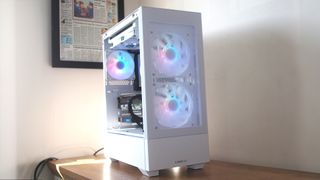
Lian Li Lancool 205 Mesh
Our expert review:
Specifications
Reasons to buy
Reasons to avoid
The Lian Li Lancool 205 Mesh is a fine example of the company successfully branching out into the more affordable PC case segment. It's towards the higher reaches of the mid-range, but it's still an affordable PC case. Better still, it's an affordable PC case packed with that premium Lian Li style.
This mid-tower is capable of holding inside an ATX, Mini-ITX, or microATX motherboard. For cooling, you can install up to five 120mm fans or four 140mm fans (with one 120mm rear blower). Radiator support allows for the installation of up to two 280mm units. It's a mesh case with filters on the front, bottom, and top panels.
It's a clean-looking, yet highly functional case. You could throw inside a power-hungry Intel Core i9 or AMD Ryzen 9 processor and not have any cooling issues. So many times have we seen manufacturers try to stand out from the crowd by going for form over functionality. Thankfully, Lian Li knows how to make excellent cases.
Best PC case for water cooling
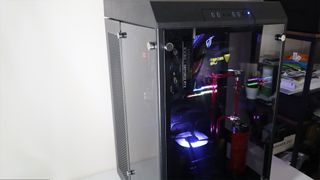
Specifications
Reasons to buy
Reasons to avoid
You won't find another case that looks like the Thermaltake Tower 900, and it doesn't even cost a lot when considering its massive size. Up close, you'd be forgiven for thinking it was one of those claw machines you find in an arcade. However, if you're looking for a solid platform for a water-cooled behemoth, this case, which comes in black and white, is about as good as it gets.
If you're planning a particularly ambitious, water-cooled build, though, that size is perfect. The Tower 900 accepts up to E-ATX motherboards, over a dozen fans, and a pair of enormous 560mm radiators. The space inside is plentiful for pumps, reservoirs, pipes, and the layout of your dreams.
It's been around for a little while now; as such, you won't find USB-C on the front, nor anything newer than USB 3.0. And you will need a pretty sturdy place to keep it since on its own; it weighs 54 pounds (24.5kg). But in either black or white and trimmed with glass on three sides, this case is going to lead to one killer build.
This is the case to get if you want to build a custom water-cooling loop. And if you don't quite know where to start with a custom loop, we've put together a comprehensive PC water-cooling beginner's guide. That'll run you through all the parts you'll be able to cram inside the Tower 900 with plenty of room to spare.
Best PC case design
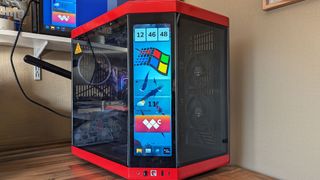
Specifications
Reasons to buy
Reasons to avoid
The HYTE Y70 Touch is a case that features a flashy 4K touchscreen on the front panel, allowing users to display PC stats, access apps, or display anything else since it acts as a standard monitor. It has a spacious dual-chamber design that simplifies custom builds and supports massive graphics cards, though it isn't quite as well suited to cable management as some more compact competitors.
You also get the classic panoramic glass panel found in HYTE's Y-Series cases, and it comes in four color options. However, the case is fragile if you're not careful with the quick-release grommets, has limited expansion slots for anything besides a dedicated GPU, and requires (currently) bloated Nexus software to run the touchscreen.
The case is a gimmick but stunning for enthusiasts who want to show off their high-end hardware. You'll need a huge desk to display it at your eye line, but it's a treat for the eyes and undoubtedly geared towards content creators or live streamers who have their rig in plain view of their audience.
How to choose the best PC case
Choosing the best PC case for you largely comes down to personal preference. Mostly, it's about the look of the case, which is entirely subjective. We may have a soft spot for the excellent Lian Li PC-O11 Dynamic, but it may not be to your liking. We will focus on the best PC cases on paper instead of in this collection, so we take into account how many fans you can screw into the case, what size motherboards you can install, and more.
If you want the most space available, you're going to want to choose a full-tower case, something like the Thermaltake Tower 900. For more compact PC builds, an ITX case will do the job just fine, which is where the excellent NZXT H210i comes into play. Other shortlisted PC cases cover specialist categories like airflow, where the be quiet! Silent Base 802 excels.
But again, the choice of a PC case is largely down to what you want to build. Take a look at our recommendations here to kick-start your creativity in putting together a PC representing who you are as an individual. Be sure to also check out our PC case deals roundup to see whether you can save on any of our favorites below.
When choosing a PC case for your next build, you'll need to consider a few factors. First, do you want a large or compact design? Does it need to support a beefy 360mm radiator for your all-in-one CPU cooler, or are you planning to maximize airflow with all the fans in the world? Once you've got a rough idea in mind, you can start browsing specific categories and form factors.
The more you spend on a case (and some of our choices here are fairly pricey), the better the construction, materials, finish, and features usually are. By going with a barebones $10 basic case, you'll likely have issues with effectively managing cable routing (though it's still possible to do a good job), you may not be able to create a custom water-cooling loop, and chances are it'll not have a fancy glass side panel.
Motherboard size doesn't matter too much since that largely boils down to how many onboard features you require and whether you intend on installing more than a GPU to use up all the PCIe expansion slots. ATX is generally a good size to go with, though if you really want that compact PC case, microATX is a great substitute that doesn't sacrifice too much on functionality.
What to look for
While you can technically choose any case you want for a PC build, it's best to bear a few important factors in mind. Here are a few things we like to consider when shopping for (and reviewing) PC cases:
- Motherboard support.
- Support for AIO and water-cooling radiators.
- Front I/O.
- Dimensions if you have tight desk space.
- Effective cable management support.
- Number of SSDs and HDDs that can be installed.
- Dust filters.
Motherboard support is important if the case is the last part you're buying for a PC build. Larger PC cases like mid- and full-towers will be able to support all sizes of motherboards (ATX down to Mini-ITX), but smaller cases will likely only support Mini-ITX and microATX, so bear this in mind.
Not all cases offer support for AIO and custom water-loop radiators. Even if you can bolt a 360mm radiator to the inside of the chassis, does it allow you to mount a pump and provide enough space for the necessary tubing? Front I/O is a minor consideration since most cases come with USB 3.0 ports and audio jacks.
If you have a tight space where the PC will lay rest, dimensions will play a major part in your decision-making. And if you want the insides of your case to look neat and tidy, effective cable management is a must with grommets, ties, and other useful features. Finally, you're going to want to consider dust filtering to keep it clean and any SSDs or HDDs that need to be installed.
Our recommendations are a great place to start. We rounded up the very best PC cases for a variety of builds.
Get the Windows Central Newsletter
All the latest news, reviews, and guides for Windows and Xbox diehards.

Rich Edmonds was formerly a Senior Editor of PC hardware at Windows Central, covering everything related to PC components and NAS. He's been involved in technology for more than a decade and knows a thing or two about the magic inside a PC chassis. You can follow him on Twitter at @RichEdmonds.
- Cale HuntContributor
- Ben WilsonSenior Editor